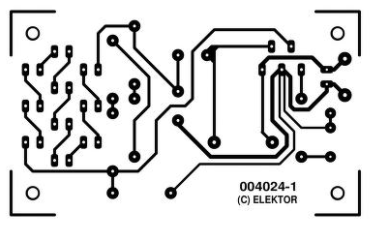The converter shown here generates a voltage that is high enough to allow ten LEDs to be connected in series. In addition this converter supplies a constant current instead of a constant voltage.
A resistor in series with the LEDs produces a voltage drop that depends on the current through the LEDs. This voltage is compared inside the IC to a 1.25 V reference value, and the current is held constant at 18.4 mA ( 1.25V devided by 68Ohm)
PCB Layout
The IC used is one of a series of National Semiconductor 'simple switchers'. The value of the inductor is not critical; it can vary by plus or minus 50 percent. 220 uH coil at 3.5 A is good choice. Almost any type of Schottky diode can also be used, as long as it can handle at least 1 A at 50 V. The zener diodes are not actually necessary but they are added to protect the IC. If the LED chain is opened during experiments, the voltage can rise to a value that the IC will not appreciate.
Circuit
PCB Layout





No comments:
Post a Comment